Gallery
Category: History Author: PANArt 11th January 2019
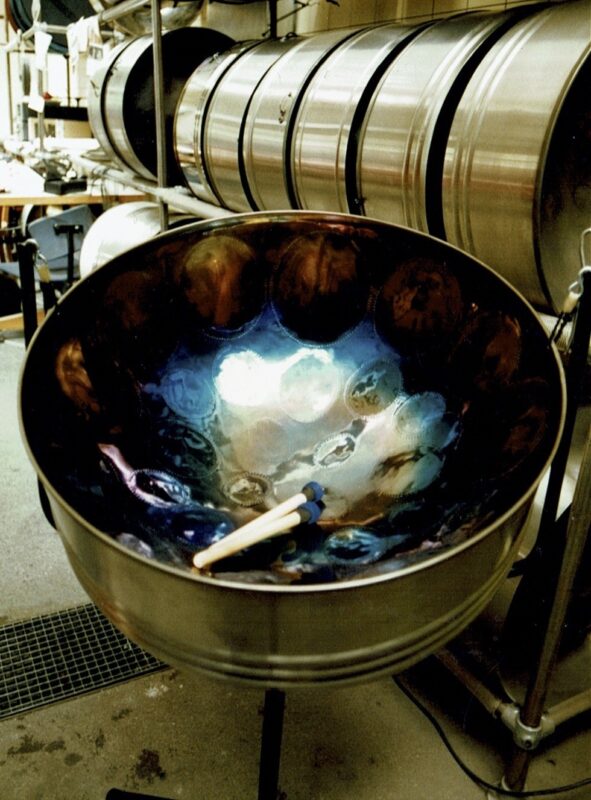
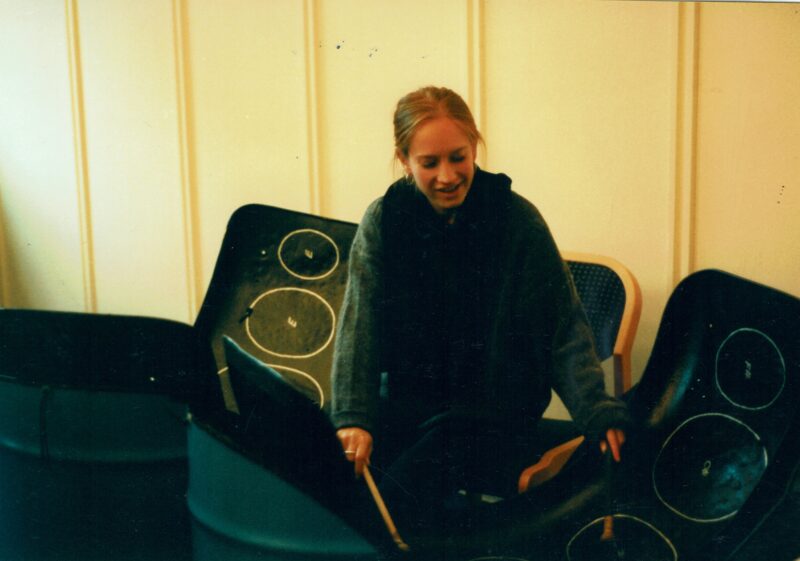
Austin fender instrument
1996
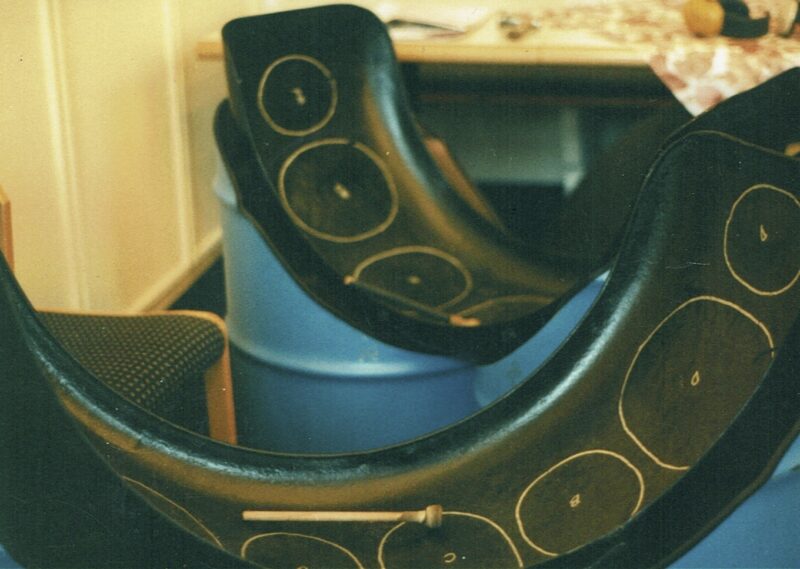
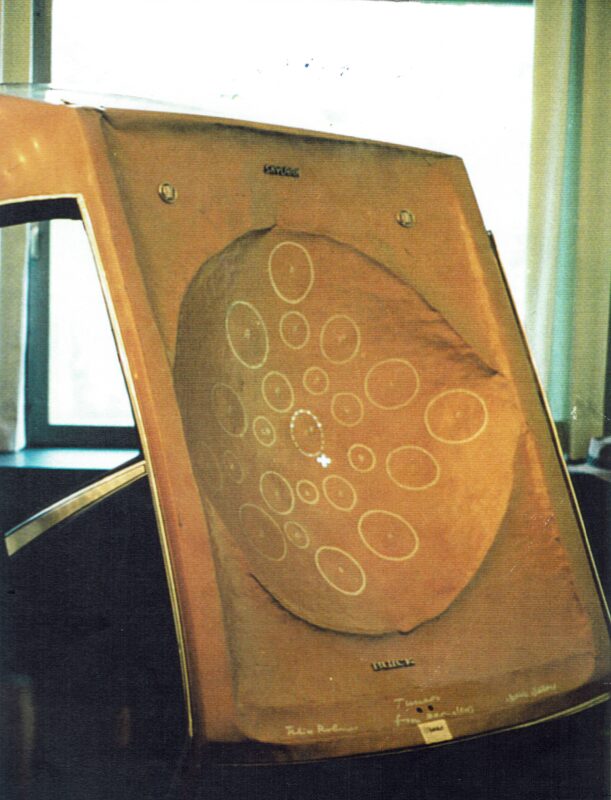
Buick car roof instrument
1996
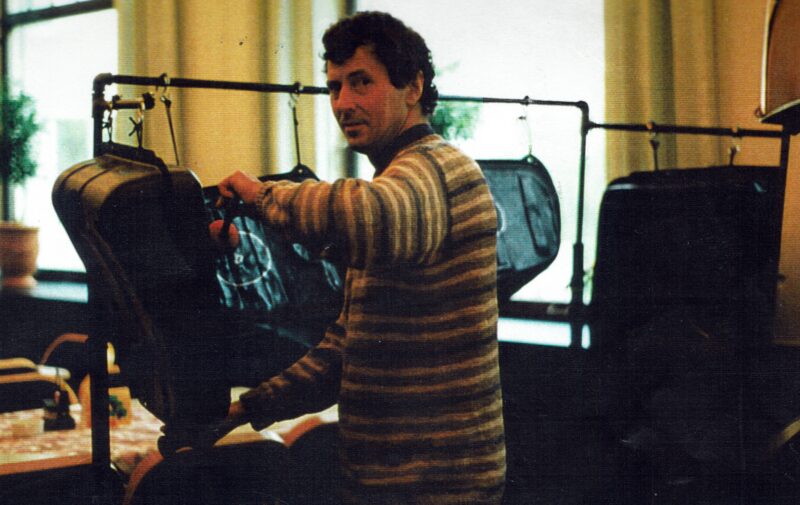
Felix Rohner plays on gasoline tank bass
1996
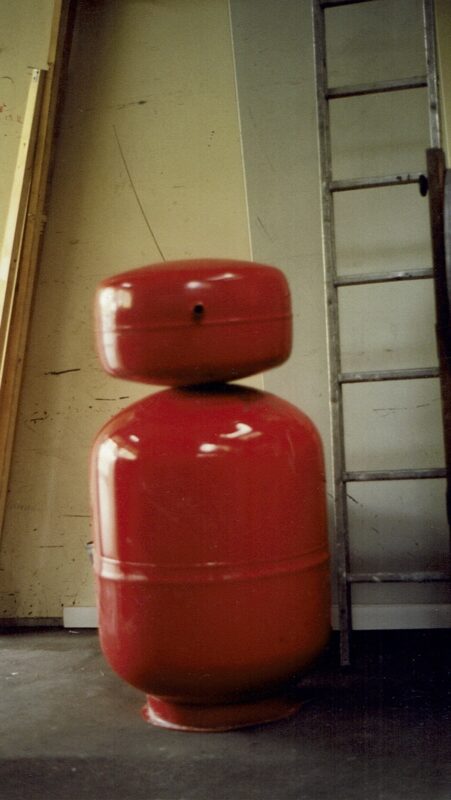

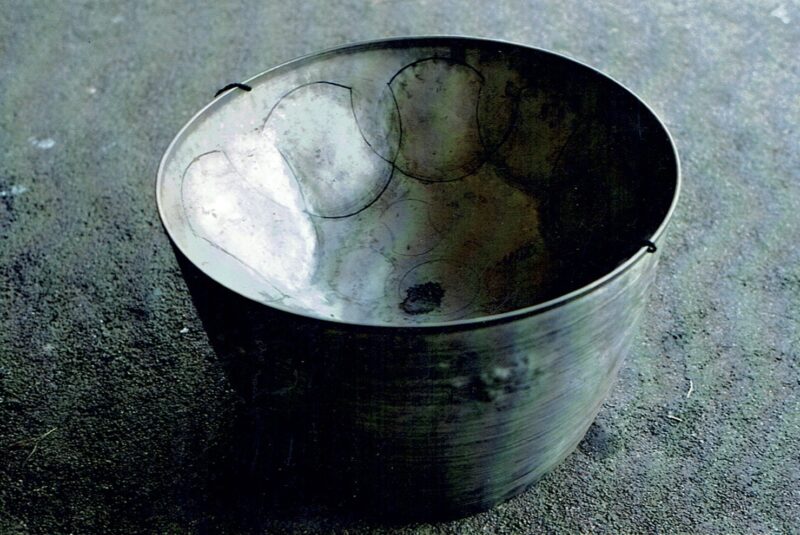
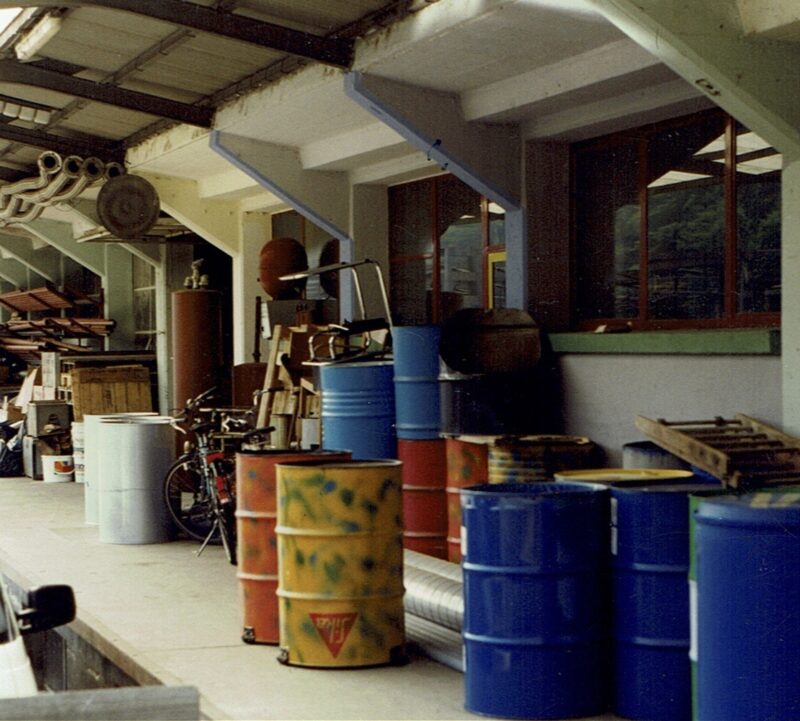
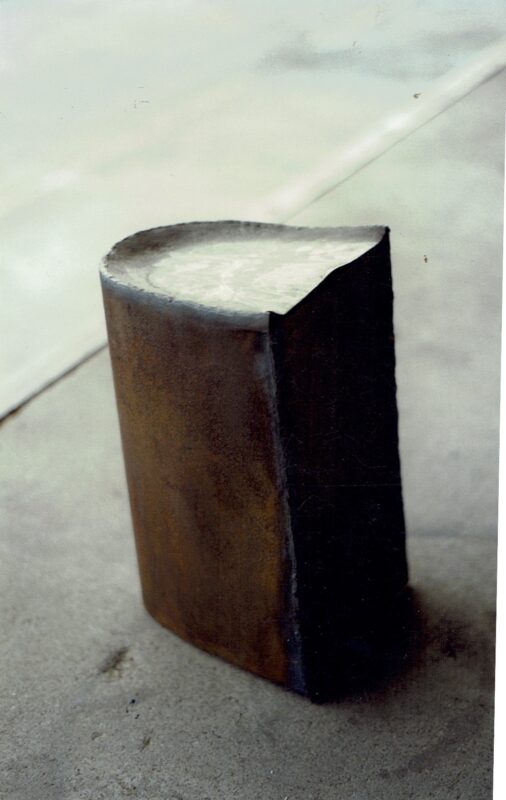
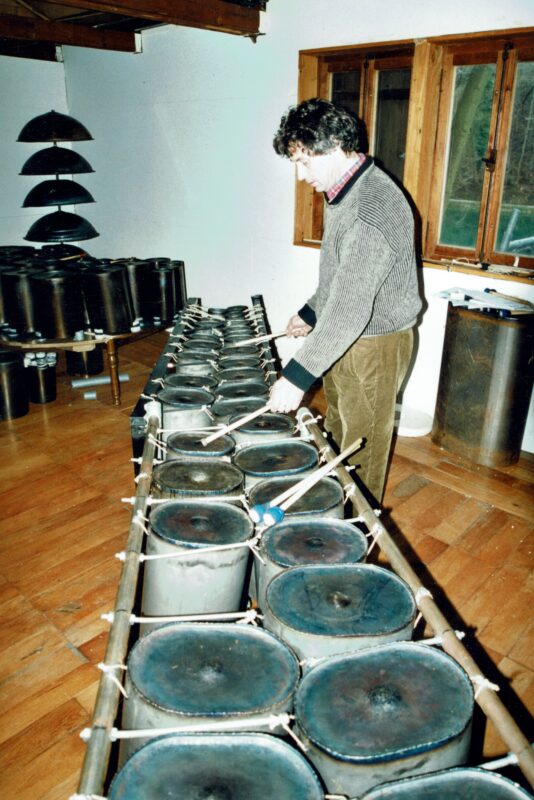
Felix Rohner plays the Tubal
1996
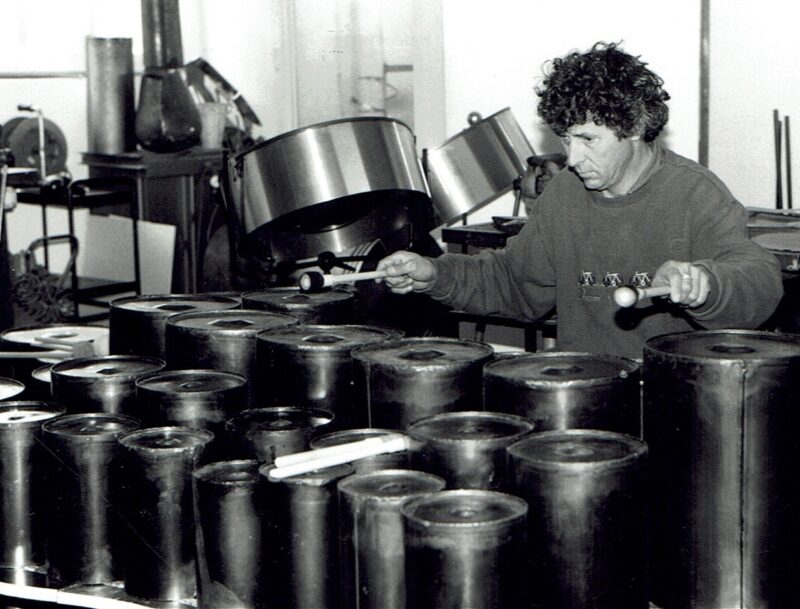
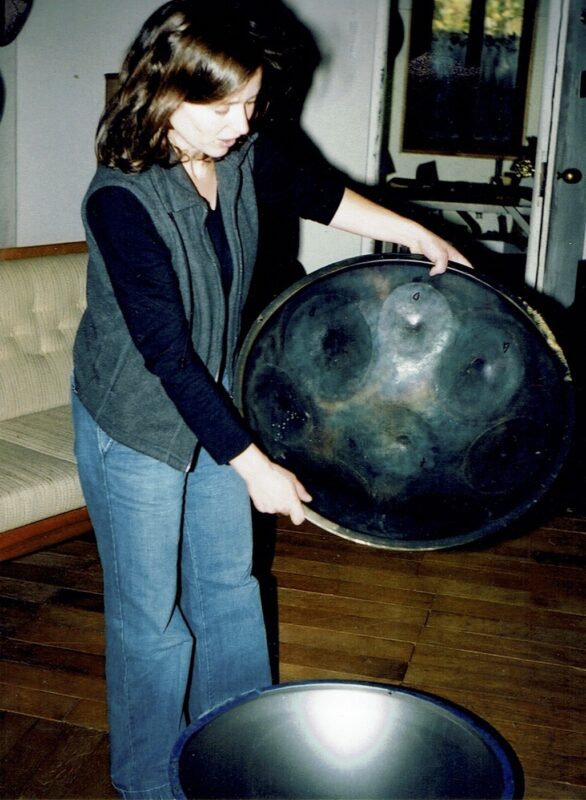



Steelpan
1968
A gift to PANArt of a Swiss engineer who worked for the oil industry of Trinidad and got this steelpan( Invaderorchester) as a gift from the government. Built by V. Mannette, brother of Ellie Mannette, inventor of the famous tenor pan called INVADER.

The first steelpan built in Switzerland
1972
According to a building instruction book by Pete Seeger. Lay-out by Ellie Mannette, steelpan pioneer Trinidad. Built by M. Berg, Fribourg, Switzerland.

The first steelpan built in Switzerland
1972
Bottom view - The grooving is clearly visible. Control of reflexion of bending waves. Natural tuning: focus on the fundamental vibration mode. Higher partials not under control. Sounds like a balafon.
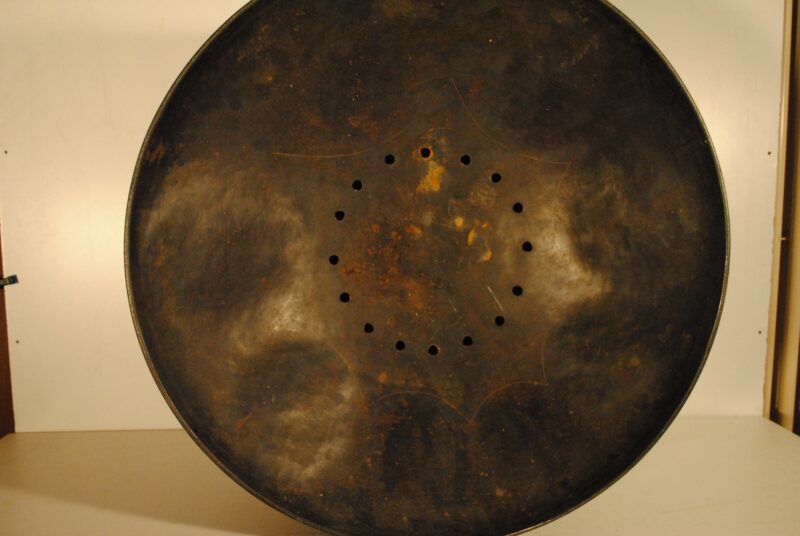
Black Baby
1995
Black Pan with closed resonance body and small resonance holes. The result was a damping of the natural vibrations of the skirt.
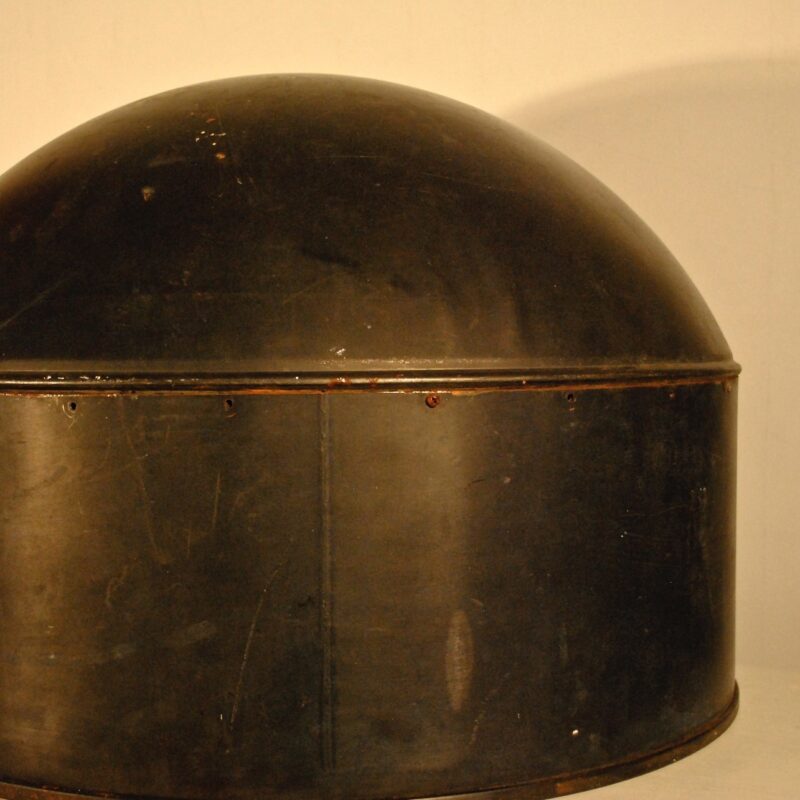
"Black Baby"
1995
Made of steel sheet, treated with Tenifer technology (hardening with carbon and nitrogen). Presented at the Conference of Advanced Materials , Cancun, Mexico, 1995. Present E. Mannette from Trinidad. First meeting with F. Rohner, tuner from PANART.

Raw form for Steelpans (Tenor and Second)
1993
Pang Composite, chrome steel skirt, developed by PANArt in the years 1993/94. Offered to all steelpan tuners worldwide. Tested by Waller and Phillips (Trinidadian tuners) who came for a visit to Berne and were convinced of the raw form's quality. Only two tuners outside Trinidad were interested: Ryo Sonobe (Japan) and Tommy Critchlow (Canada).

Studies of the stiffness distribution of a dent on the brass shell, 1mm thickness, 600mm diameter. Brass has a low E- Modul and is therefor not of interest for the construction of instruments with a high non-linearity like the steel pan or the Hang sculptures.

Experiment with a raw form of a Ping instrument (diameter 600mm): tone fields with an outside dome geometry. An attractive percussion instrument!

Treichel (cow bell in Switzerland) with five sound fields (minor pentatonic), with double bobbin, diameter 55cm. The tuner's dream: a cow orchestra. Project discarded: Insight that cows should be freed from bells. All day long in the sound of steel: poor cows! One can' t close the ears!

Panginstrument with polyester skirt: failed experiment: damping too high.
The skirt absorbs too much vibration energy.
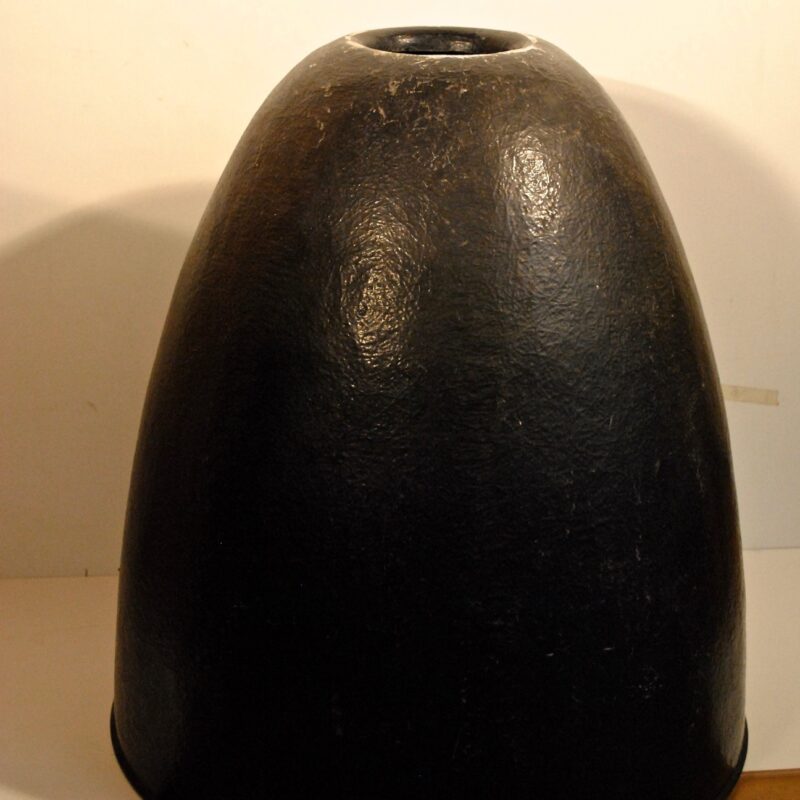
Panginstrument with polyester resonance body with opening. Diameter 600mm. Study of vibration modes of the cavity.
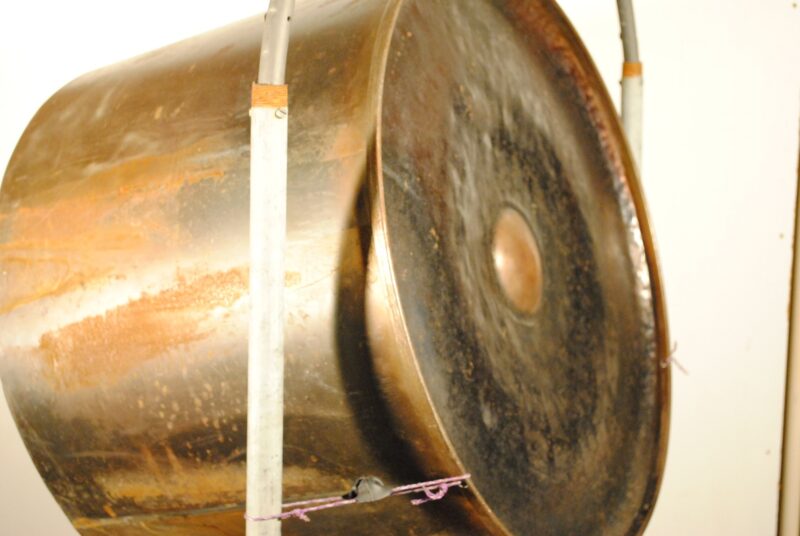
Pung, made of Pang Composite, played by hand. This gong-like sculpture creates a low oscillation of the skirt with the playing surface, a new principle that differs from the way the gong works. A successful experiment that could be pursued further.

Pung and its suspension device. Minimization of energy loss due to rubber bands. Studies to find out how much energy is lost through the supporters.

Tubal
Resonance body of the TUBAL, a marimba-like instrument with a range of three octaves (chromatic). In the years 1996-99 the PANArt tuners began to experiment with the navel in the center of the tone field. They were also interested to integrate the air resonance. Isolating a note field leads to poor sound. Recoupling is very important to get a sound effect and a radiation which touches humans deeply.

To study the resonance of the air in the cylinder the tuners used a round styropor with a hole to manipulate the air volume. That way the air sound could be integrated (an octave lower).

Prototype 1
December 1999
Consisting of two deep-drawn shells which usually served for the pang instruments Ping, Peng and Pong. The rudimentary indentations in the tone fields - called navel - are recognizable. Diameter:600 mm.

Playing side of prototype 1
Made with parts of a pong instrument (deepest voice of the pang instruments). Eight motes, pentatonic.

Prototype 2 - Sound sculpture
The PANART tuners had to find the right size and they found it: the size of a hug, ca 50 cm or 20 inches. They tried to create something like a Ghatam in Pang composit with a neck shaped upwards.

Prototype 2
January 2000
Attempt by means of a resonance hole to obtain a bass pulse failed.

Prototype 2
January 2000
Backside
Looks like the actual Hang Balu 2019!

Playing side prototype 3
2000
Hang percussion instrument
The opening weakens the structure, instable, cavity resonance too weak

Fixing a membrane inside with a stick to excite it didn' t work, experiment failed.
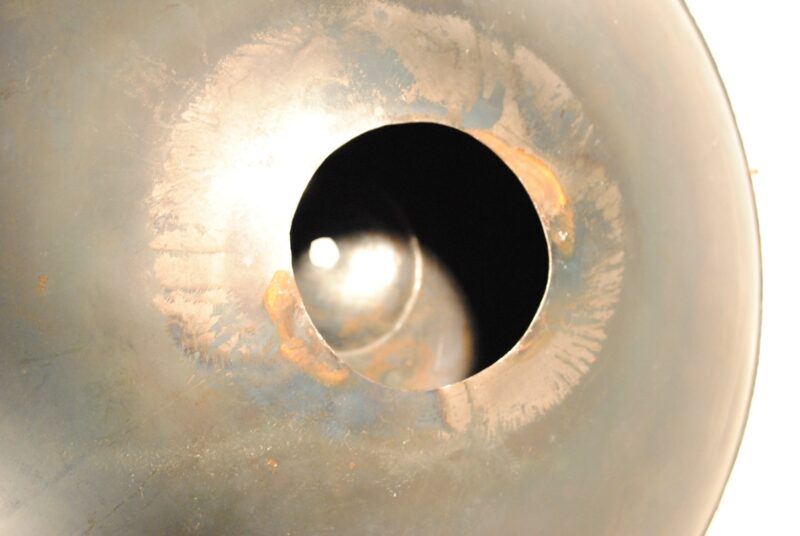
Detail of Prototype 3
January 2000
In search of the bass: installation of a round plate in the equator of the instrument.

Prototype 4
January 2000
With elliptical dome and seven tone fields. Shaped by hand. First sound sculpture with Ding (central tone field).
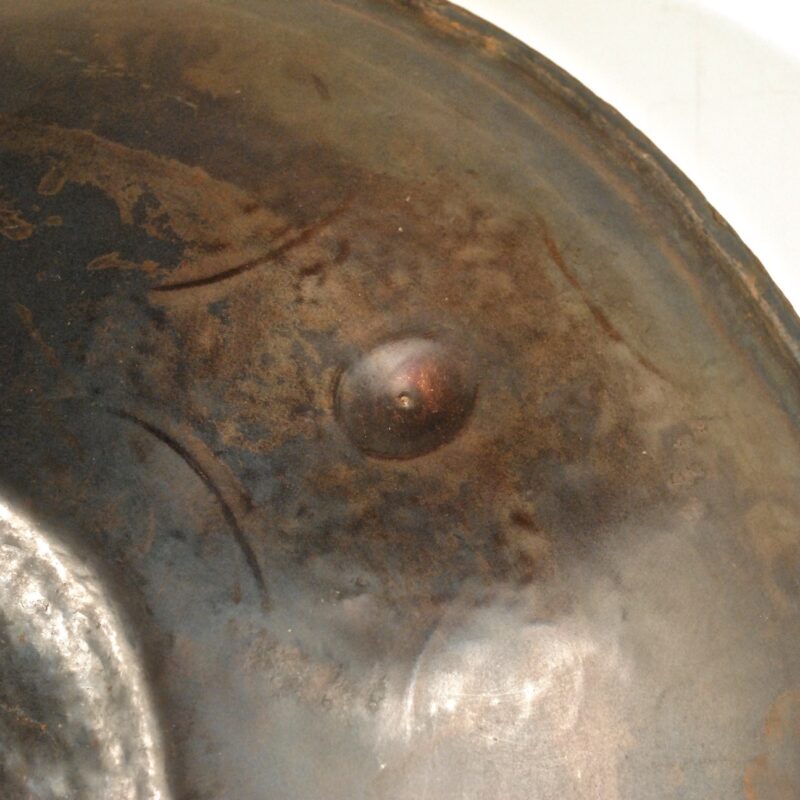
Prototype 4
2000
Stiffening the shape to change reflexion and shifting of energy.Sound studies: The shifting of energy from lower vibration modes to higher ones is the nature of these instruments. Each tuner will choose his parameters (there are over 40!) to find his own sound or better said: to find his energy, because the sound has - through the introduction of prestress- to be compressed and this means hammer work! Long sounding instruments can' t be mastered. More than a half second will lead to a sound mash. Especially when you play in a collective.
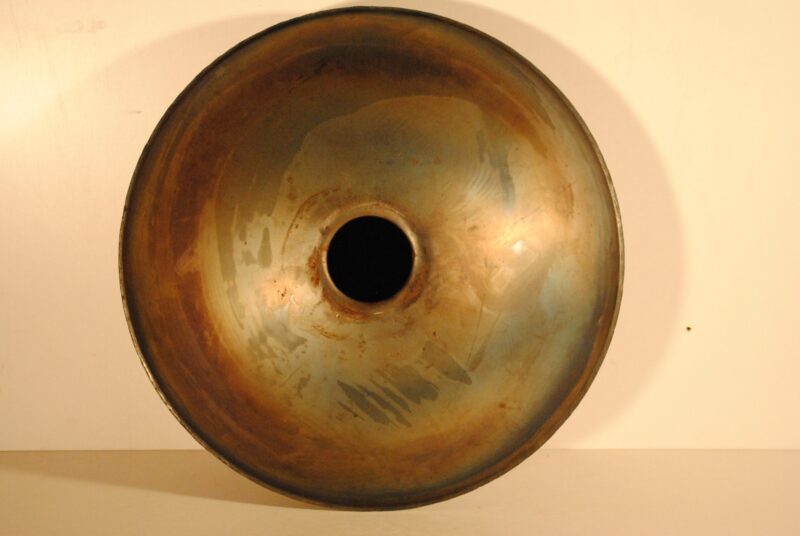
Prototyp 4
2000
Gu-Side - Looking for the right size of the resonance hole

Prototype 2 - Hang sound sculpture
2000
Ding side with hand shaped central tone field (Ding)from raw form (rolling), spot welded. Spot welding is a bad fixation of the two shells. If the instrument drops on the rim, it will break.
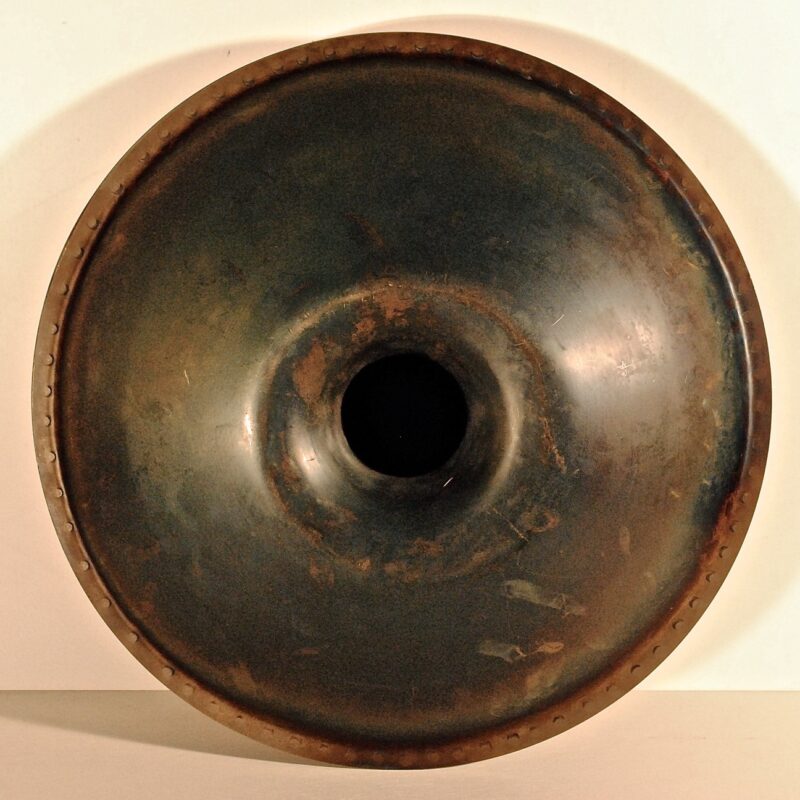
Prototype 4 - Hang sound sculpture
2000
Gu-side - hand shaped, diameter : the size of a tuners hand (F. Rohner, PANArt)
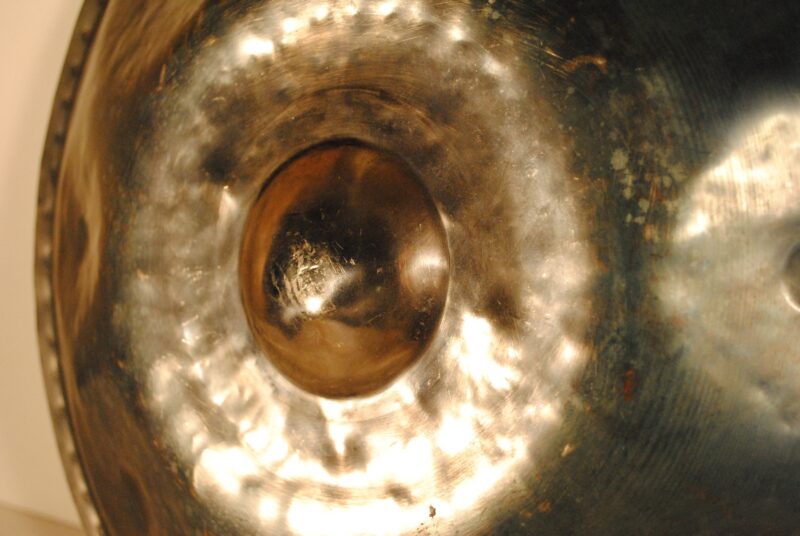
Prototype 4
central tone field Ding, name given by the PANArt tuners because the Ding sounds like bling-bling, ding-ding.

Prototype 5
2000
Work on the boundary conditions of the Ding. Inspired by the bored steelpan from the 80ies (Trinidad)
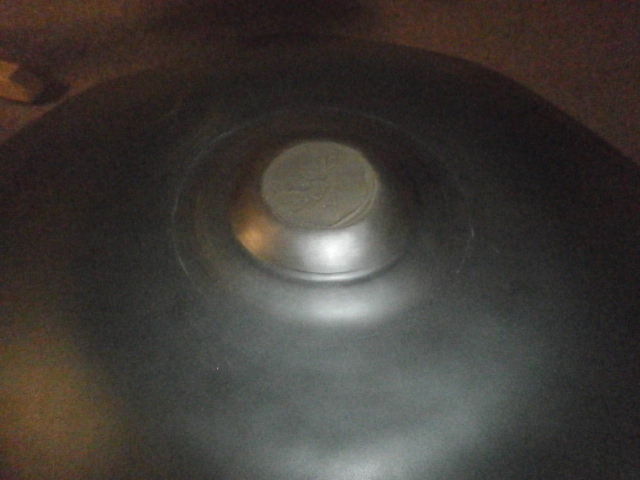
Ding-Side
Studies of the energy transfer to the Ding. The dome receives an elastic core. The impact by hand is under better control and more energy can be transfered. Higher partials are damped.

Studies on the dome structure of the Integral Hang Sound Sculpture 2008
Each intervention makes the dome less stiff. This has an effect on the shifting of energy.

Studies on prestress
The dome has an important function in the distribution of the prestress, which is indispensable for a strong and short impulse. A musical instrument demands mastering of the sound. If it is too long, it will belong to the family of instruments with long sustain like gongs and musical bowls. Working with hammer and sheet means managing energy. For long sounding instruments you need thicker material, more mass. Tuners integrate string, drum and bell in one instrument. PANArt tuners integrate also the air cavity. See Hang Balu, Hang Bal, Hang Gubal.

Integral Hang
Sound sculpture 2008
Integral means: The air cavity sound is integrated when the instrument is played in the right position. If your legs have the right angle, the octave below the Ding will appear and the player gets a low sound: a grounded sound.
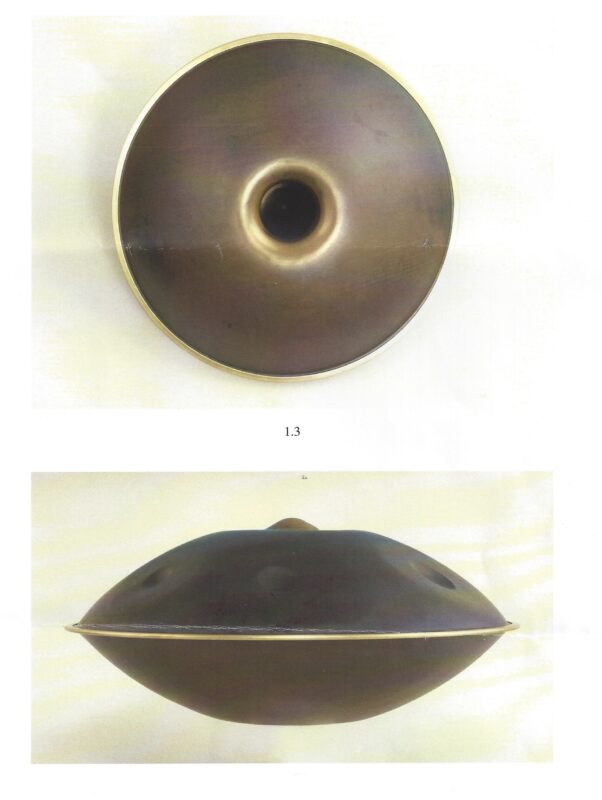
Gu-Side - Integral Hang
A brass ring: the symbol of integration not only of the air sound but also the integration of all sound in the tonal ring. Each has neighbours who will recouple if they are harmonically related.
A balanced instrument--beyond the conception of scales and major and minor tonalities.
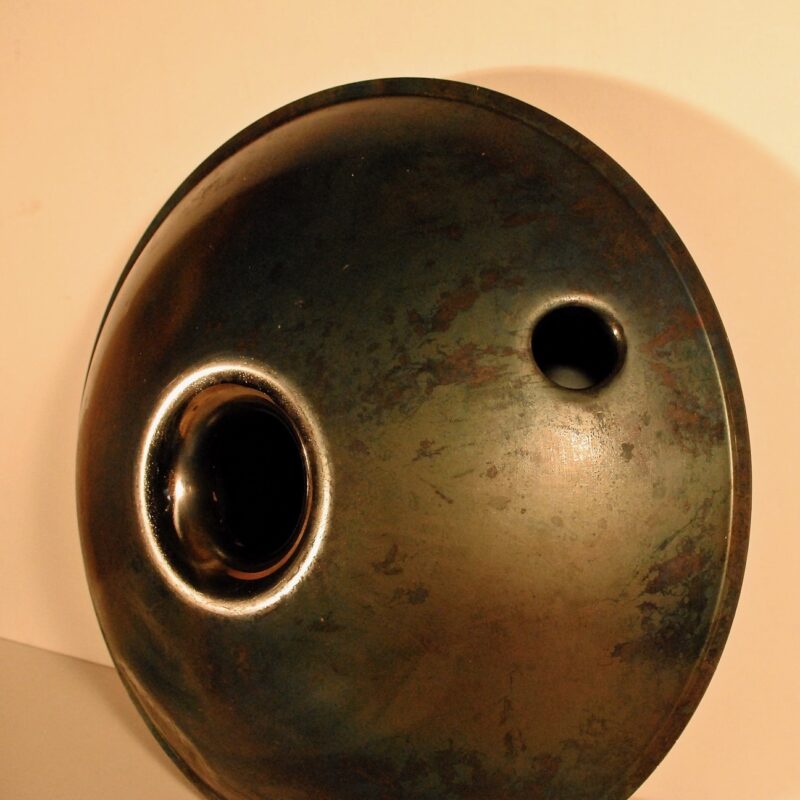
Percussion instrument Hang with an additional resonance hole: Gudu. This included a magnetic disk for closing, called Undo. An idea of Omri Hason, percussionist, Bern CH. Adds udu effects to the instrument.

Panggong
2010
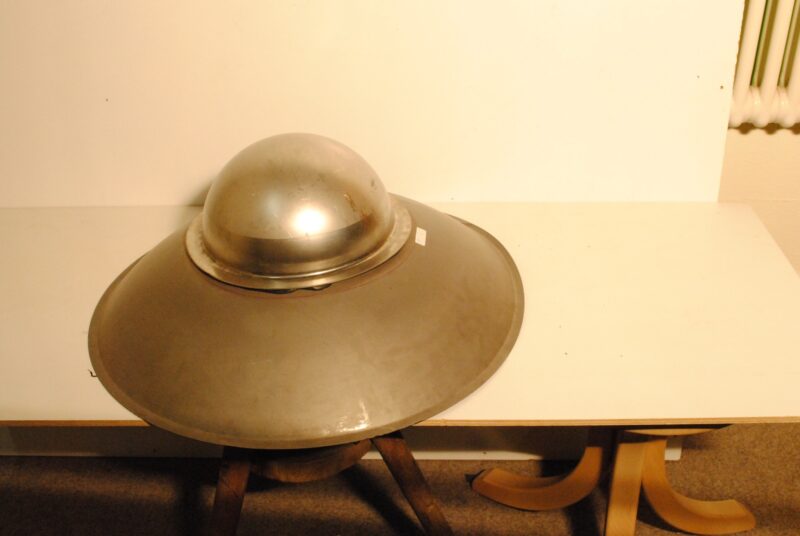
Study of different volumes with so called Gugels (pronounced Google). The Gugler are traveling middle age people wearing a jacket with a hood.
2013

Experiments with different sizes of gugel to find the right size of the cavity volume and the right shape for playing on the lap.

Hang Gubal, made of Pang composite, 2013, design protected. Helmholtz resonance 78 Hertz. 7 sound fields with central Ringding, harmoniously tuned.

Studies on dome size and embossing technique on Gu shell
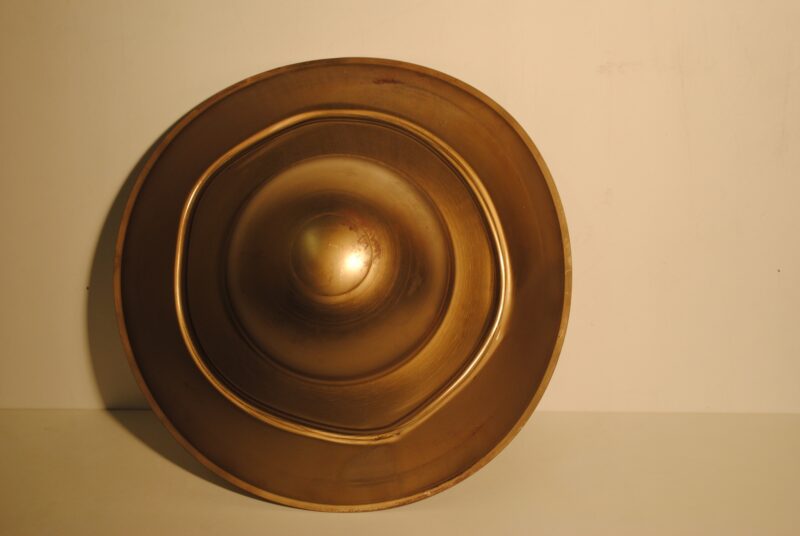
Gu side of a Hang Gubal.
The shell frequencies can be changed by introducing stiffening rings into the shell. Tuners are experts in stiffening and its opposite. Stiffening is a very important parameter in tuning. Each tuner has to choose his parameters (there are over 40!) to create his prefered sound. One can' t copy such a sound! One can' t copy such complex instruments. What can be done: One can lead it to banality: a poor instrument without attack.

Hang Glove 2015
The Pang-Glove is held with the thumb through the opening. The other hand is playing it. Inspired by the Sahn, an instrument still played in Jemen: Tea tablets hold with the thumbs and played with fingers. In the standing sound you sing your sacred or profan song.

Hang Gudu
2015 - Made of Pang Composite.
The Hang Gudu is a talking pot that babbles with relish. It requires nimble hands. Its tuned Ringding (ring around the opening, the Gu) and its highly rigid shoulder zones offer a rich variety of percussive sounds.
Its off-centre Gugel (hemisphere on the underside) allows it to be played wonderfully in various positions close to the body.

Pang Strings
2016
The Hang Gudu and Hang Gubal are joined by stringed instruments. Here, too, we have committed ourselves to reduction and have strung only two strings on the individual bodies of pang composite. The lower string can be understood as a bordun sound, which invites to play melodies on the higher tuned string.
In combination with the grooves of the different Hanghang, this creates exciting music in the moment.

Hang Bal, made of Pang Composite
2016 - Design protected. Helmholtz resonance: 78 Hertz.
The Hang Bal can be hung around the neck and thus lies very close to the body. The possibility to move while playing supports the intuitive dance of the hands wonderfully.

Hang Gede
2017 - Made of Pang Composite. Design protected.
This small vessel with a volume of just over 3 litres complements our instrumentarium and provides clear percussive sounds. It is also possible to play clear bass tones, which are higher than those of the other Hanghang due to the small size of the Hang Gede and thus also keep up with the groove in a well audible way.
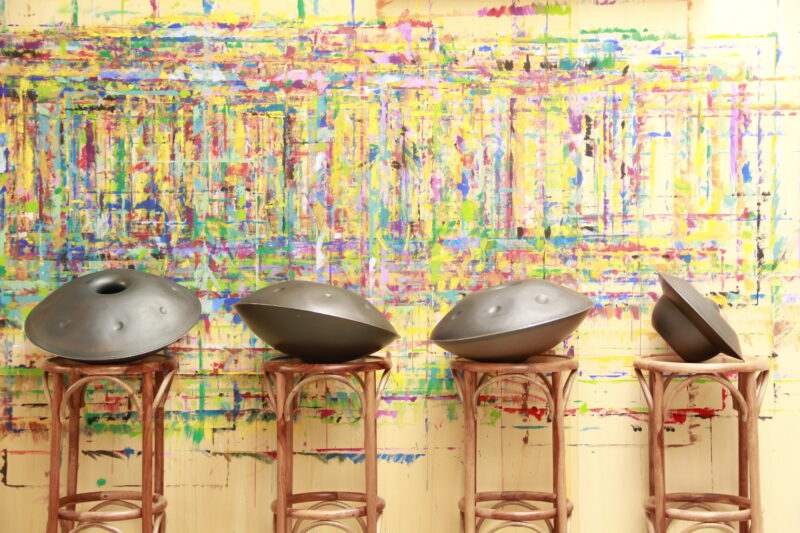
Hang Balu Set
After the vibrant sound sculptures Hang Gubal and Hang Bal, we have returned to the lenticular form in 2018. The many new experiences and insights of the past years have flowed into this new Hanghang.
Different voices (Sui, Sai, Sei) come together to form an exciting collective. Complemented by the smaller Hang Godo, they merge to form the Hang Balu set.

Hang Godo
2018 - Design protected. Made of Pang composite.
A truly groovy vessel.
This smaller member of the Hang family has an intense bass that can be lowered by an octave with the hand. With its clear Ding sound and crisp, percussive zones, it can accompany and enrich many formations.

continuous form studies
2020

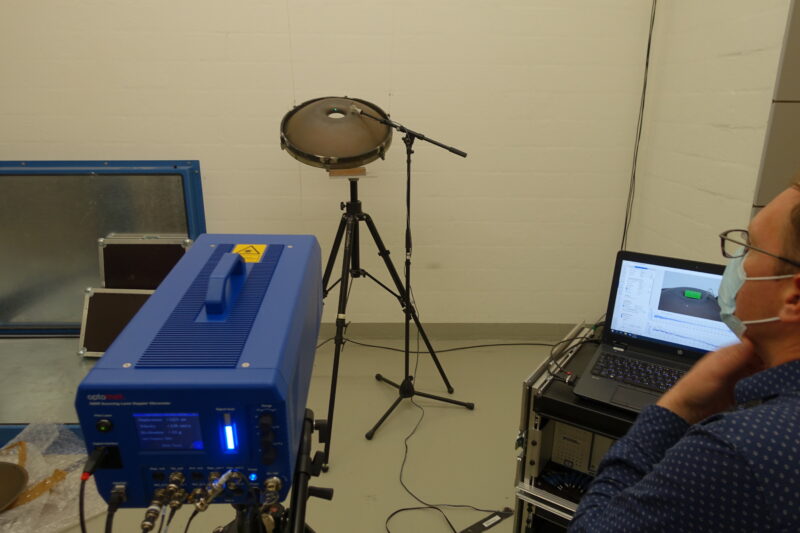
Laser vibrometry
2021
Laser vibrometry study of different forms of Pang and Hang at the Swiss Federal Laboratories for Materials Testing and Research EMPA. PANArt's empirical research is once again compared with precise measurements using the latest technology and with the subsequent analysis.
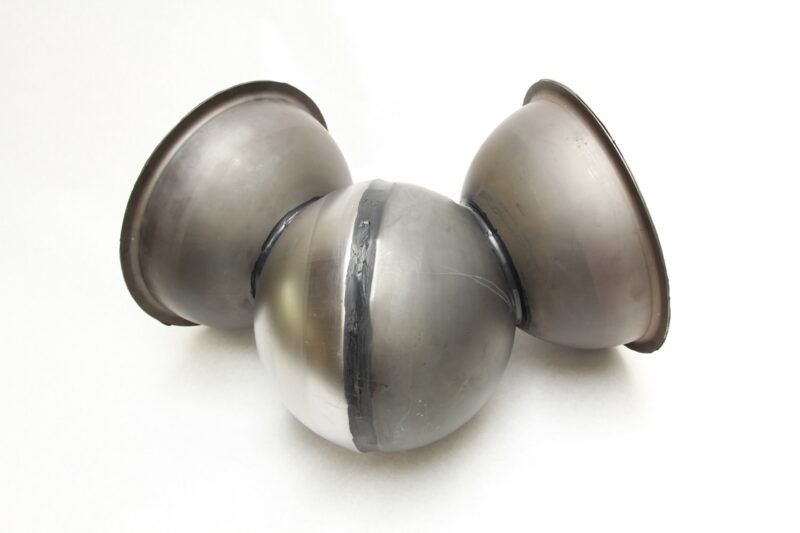
Work in Progress: Pangolo
2024
A new vessel is emerging: ergonomic, percussive, inviting.
